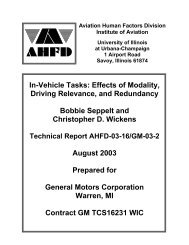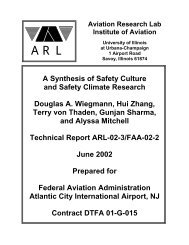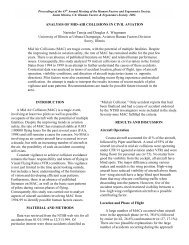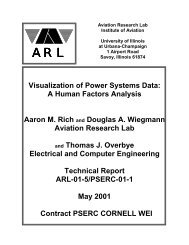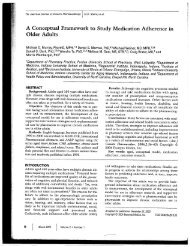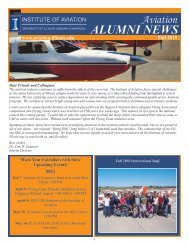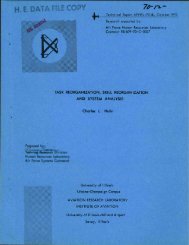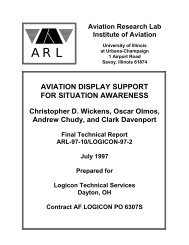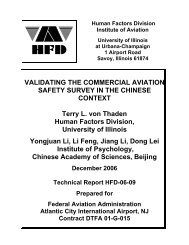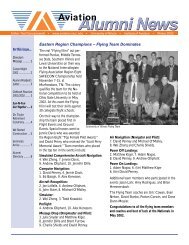Defining and Assessing Safety Culture in High Reliability Systems
Defining and Assessing Safety Culture in High Reliability Systems
Defining and Assessing Safety Culture in High Reliability Systems
You also want an ePaper? Increase the reach of your titles
YUMPU automatically turns print PDFs into web optimized ePapers that Google loves.
Gunter, B., & Furnham, A. (1996). Biographical <strong>and</strong> climate predictors of job satisfaction<br />
<strong>and</strong> pride <strong>in</strong> organization. Journal of Psychology, 130(2), 193-208.<br />
Correlation analysis <strong>and</strong> step-wise regression analysis were used <strong>in</strong> four public sector<br />
organizations to exam<strong>in</strong>e the relationship of six biographical <strong>and</strong> 14 climate perceptions with<br />
reported job satisfaction <strong>and</strong> pride <strong>in</strong> the organization. Overall, perceived climate factors turned<br />
out to be more significant <strong>and</strong> powerful than biographical factors as predictors of job satisfaction<br />
<strong>and</strong> pride, but the predictability of different climate factors varied. Biographical data emerged as<br />
predictors only <strong>in</strong> relation to pride <strong>in</strong> the organizations. Although all four organizations were<br />
comparable public sector organizations, the results suggested that there were noticeable<br />
differences among the organizations <strong>in</strong> the overall significance of climate <strong>and</strong> <strong>in</strong> the types of<br />
climate variables that emerged as significant predictors.<br />
Helmreich, R. L., & Merritt A. C. (1998). Organizational culture. In R. L. Helmreich & A.<br />
C. Merritt (Eds.), <strong>Culture</strong> at work <strong>in</strong> aviation <strong>and</strong> medic<strong>in</strong>e (pp. 107-174). Brookfield, VT:<br />
Ashgate.<br />
In chapter 4, organizational culture <strong>and</strong> cultural strength was def<strong>in</strong>ed. An approach to the study<br />
of organizational culture comb<strong>in</strong><strong>in</strong>g the managerial, anthropological <strong>and</strong> psychological<br />
approaches was used <strong>in</strong> this chapter. Two US airl<strong>in</strong>es were compared on various parameters to<br />
highlight the best <strong>and</strong> worst organizational cultures among n<strong>in</strong>e US-based airl<strong>in</strong>es. Different<br />
subcultures may exist <strong>in</strong> the same organization, but an <strong>in</strong>tegrated organizational culture would<br />
have a positive impact on service <strong>and</strong> safety. An <strong>in</strong>tegrated organizational culture needs the<br />
cooperation with<strong>in</strong> <strong>and</strong> between the ‘operators’, the ‘eng<strong>in</strong>eers’, <strong>and</strong> the ‘executives.’ F<strong>in</strong>ally,<br />
strategies of strengthen<strong>in</strong>g the organizational culture were discussed.<br />
In chapter 5, safety culture was def<strong>in</strong>ed as an organizational outcome of the <strong>in</strong>teractions between<br />
professional, national <strong>and</strong> organizational culture, as well as organizational climate <strong>and</strong> tra<strong>in</strong><strong>in</strong>g.<br />
It was suggested that error management was an essential strategy for achiev<strong>in</strong>g a safety culture.<br />
For diagnos<strong>in</strong>g an organization’s health <strong>and</strong> practices, empirical data are needed. Methods of<br />
acquir<strong>in</strong>g diagnostic data under reactive <strong>and</strong> proactive research strategies were discussed.<br />
Followed the research f<strong>in</strong>d<strong>in</strong>gs <strong>in</strong>to crew behavior. The role of CRM <strong>in</strong> chang<strong>in</strong>g behavior <strong>and</strong><br />
the effect of operational complexity on performance <strong>and</strong> automation usage were discussed.<br />
F<strong>in</strong>ally, how the issues of culture, error <strong>and</strong> error management <strong>in</strong>tersect <strong>in</strong> the operat<strong>in</strong>g room<br />
<strong>and</strong> the parallels between the flightdeck <strong>and</strong> operat<strong>in</strong>g room were demonstrated.<br />
18




